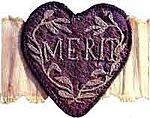Cincinnati nightclub shooting
2017 in Ohio2017 mass shootings in the United States2017 murders in the United StatesAttacks in the United States in 2017Attacks on nightclubs ... and 6 more
Crimes in CincinnatiDeaths by firearm in OhioMarch 2017 events in the United StatesMass shootings in OhioUse American English from March 2017Use mdy dates from September 2018

In the early morning hours of March 26, 2017, a shootout occurred at the Cameo nightclub in southeastern Cincinnati, Ohio. One person was killed and 16 others were injured. Two suspects were arrested on March 30, though police continued to search for more people involved. One of the suspects, who was among those injured, later died of his injuries on April 4.
Excerpt from the Wikipedia article Cincinnati nightclub shooting (License: CC BY-SA 3.0, Authors, Images).Cincinnati nightclub shooting
Kellogg Avenue, Cincinnati
Geographical coordinates (GPS) Address Nearby Places Show on map
Geographical coordinates (GPS)
| Latitude | Longitude |
|---|---|
| N 39.0932 ° | E -84.42844 ° |
Address
Kellogg Avenue
45228 Cincinnati
Ohio, United States
Open on Google Maps










